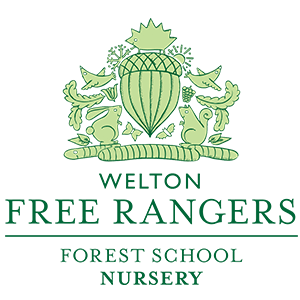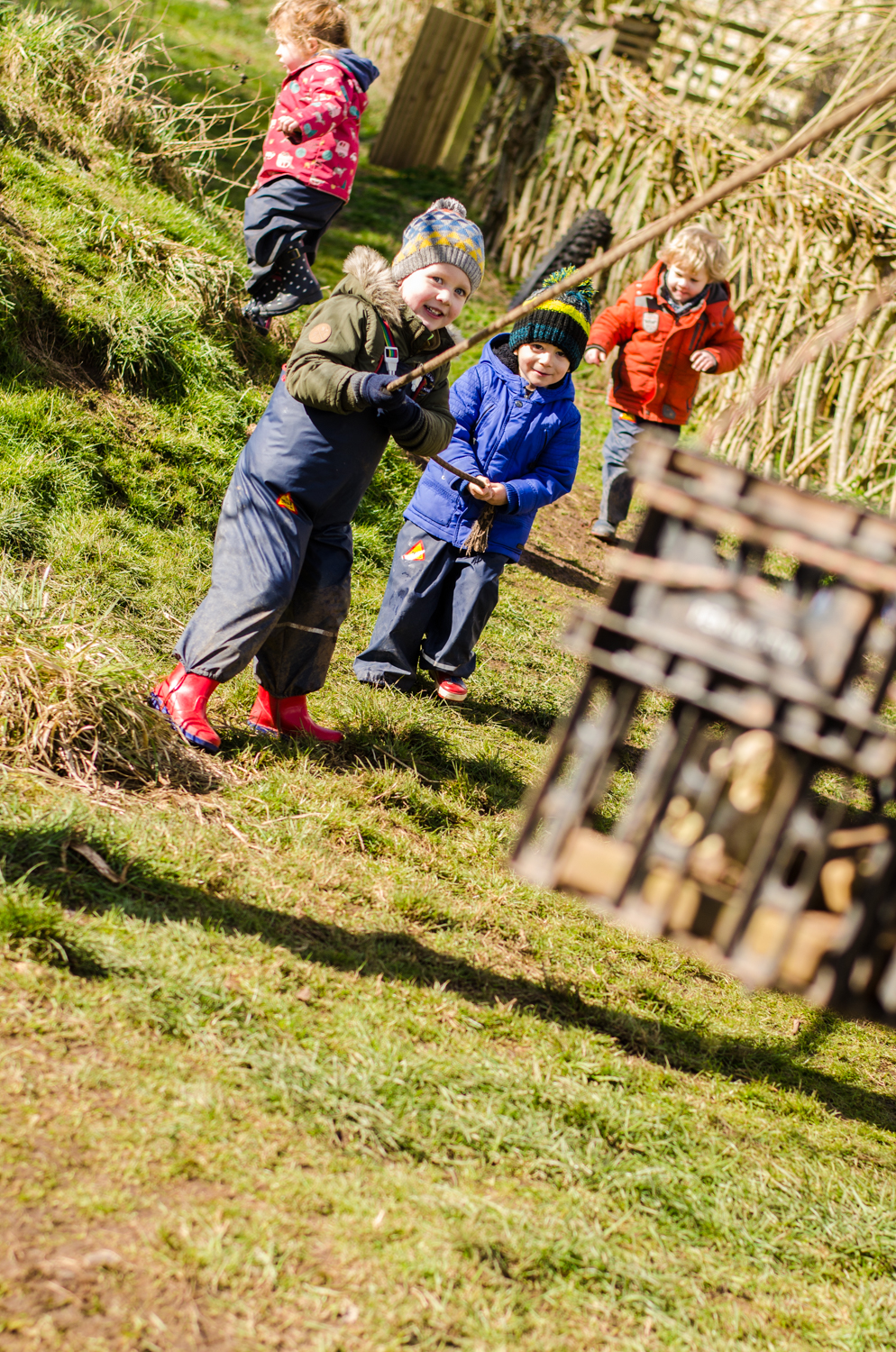Over the past few weeks we've been exploring the children’s perceptions of strength. If you ask any child if they’re strong, you’ll get a mini Mr & Mrs Universe lineup of bicep tensing and face gurning! The majority of children think they're inherently stronger than the next. And they love to show you just how strong they think they are.
Our little Rangers have been getting physical a lot recently whilst out in the paddock, whether climbing and running across the site or even the zip lining they completely aced (check my last post here). It seemed only natural to progress to looking at strength and what it means to be strong.
Forest School provides fantastic physical development for children. It is an inherently active experience and is not only ideal cardiovascular exercise but is perfect at building up a child's stamina and resilience (especially in the cold and rain of late!) At Free Rangers, the children are tasked to plenty of climbing, balancing and jumping, but there isn't much opportunity for lifting or pulling on a regular basis, especially something weight based. Once we had recapped on the zip lining, we looked at what the children thought being strong enabled you to do. Most jumped to the obvious: you can lift heavy things. What was less obvious was what they thought they could lift, or rather perceptions of their own strength. Over the weeks to follow we witnessed some magnificent co-operation and the surprise on their faces as they managed to lift quite heavy objects (as well as the enjoyment and thrill of being off the ground and swinging in the crate if they decided they wanted to be the heavy object!) but it was the start of their understanding that many hands make light work.
The sessions were open access so the children were free to not take part if they so wished. Largely though, I find the children will naturally navigate back to any activity because it's their choice to do so. There was no fixed aim of the session, other than I wanted all the children to at least attempt to utilise the pulley and crate system to assess the children's abilities and develop some conversations about strength. The pulley and crate system worked on two levels: the first was the initial up and down motion of the pulley, but it could also slide left and right along a rope as well to add an extra dimension and movement to the activity. Large wooden blocks were available to stack into the crate to either add or reduce weight according to the children's requirements.
As the weeks progressed we also added a different elements to keep the sessions interesting. Tyres were added which the children could drag up the hill to roll down, alongside some large heavy wooden blocks to build structures to climb and jump on or to extend the Timber Trail. We also added some slack lines for the children to explore their motor planning as they navigated around a tree, as well as stamina to complete the whole 15m length. We witnessed some really fantastic learning and development across the week. There was some superb child-led learning and teamwork all interwoven together with problem solving as the children helped each other to drag up heavy tyres, to move and assess bridges and roads, or to heave heavy loads up into the air. There was also an interesting conversation where the children discussed who was stronger: boys or girls? We talked with the children and found both groups thought that they were the strongest but they couldn't tell us why. There were only a few children that felt both girls and boys could be strong. We also discussed whether it mattered who was strongest as long as we helped each other to achieve...
Further to this amazing play and development, I also wanted to continue the thread of talking about emotions throughout Forest School. Similarly, when the children accessed the zip line, we posed questions to them about how they felt about going or not going on it, both before and afterwards. The aim of this was to build up not only their emotional vocabulary but also their confidence to try something new and the confidence to manage their emotions, both mentally and physically. We already use an emotion guidance technique called "emotion coaching". It's exactly what it sounds like. We discuss any conflict or upsetting incident by de-escalting their emotions by recognising, validating and problem solving. This allows the children to self-regulate when the going gets tough, but more importantly, they will start to notice and empathise with others that may be struggling as well.
Our little Free Rangers are pretty good at managing their emotions and being able to vocalise to others when they are happy or unhappy. Through this activity, we would talk with the children if they were struggling to complete a task. We would ask if they could think of a way of making it easier. It's also important to value the children's efforts: You've tried your hardest to get that tyre to the top of the hill, but I can see you're getting frustrated. I wonder how we can get it there? Or vice versa: I can see your friend is trying their hardest to get that tyre to the top of the hill, but I can see they're getting frustrated. I wonder what we could do to make it easier for them? We largely want the children to get to this thinking on their own, but it doesn't hurt to model positive emotional responses to situations because children see and hear everything we do as adults. Subtle body language cues, the subconscious words we use and the way we acknowledge stress, all feed into how they respond to life's struggles. It's therefore important as significant people in their lives to help them navigate through stressful situations by talking to them about it. By saying that's okay to talk about. By letting the children know that mistakes are okay. There's a lot more to play than just play...
Thanks for reading!
























